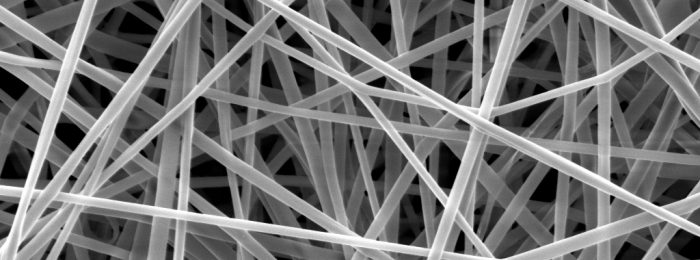Biofabrication
The Biofabrication Lab has state-of-the art systems that produce scaffolds for tissue engineering applications. The existing equipments are additive manufacturing systems enabling to process a wide range of materials (polymers, polymer/ceramics and polymer/metals) in a layer-by-layer fashion.
 |
Laboratory 360 view ( Must log in your Google account for a 360 view ) |
Equipment:
|
|
Bioextrusion system:
The present system relates to a novel process and equipment for Bioextrusion-based Additive Manufacturing, destined to produce mono and multi-material scaffolds containing or not cells and growth factors for Tissue Engineering applications. The fabrication of these scaffolds is made through the extrusion of one or more materials (synthetic and natural biopolymers, bioceramics and polymer/ceramic biocomposites) through a layer-by-layer manufacturing process. The major characteristic of this system is the possibility of extruding multiple materials through a rotational extrusion head that can process high, medium and low viscosity materials at low or high temperatures, and allowing the direct printing of cells. The system also contemplates an automatic sterilization mechanism. The Bioextrusion system is protected by a Portuguese National Patent (Nº 104247).
Dual-Bioextruder:
The Dual-Bioextruder is a system that resulted from a scientific collaboration project established between the CDRSP and the institute of Health and Biomedical Innovation from Queensland University of Technology (Australia). It aims at sharing scientific and technological knowledge regarding the field of Tissue Engineering, and developing intelligent biological substitutes capable of replicating the structural and functional complexity of native tissues, namely bone and cartilage.
This is a multidisciplinary project intending to place CDRSP in the front line of the Biofabrication domain through the development of unique competences in the following areas:
|
|
The Dual-Bioextruder enables to process several materials, namely biopolymers of synthetic/natural origin, bioceramics and biocomposites, for the production of multi-material scaffolds with functional gradients. In addition, it allows the production of hydrogel-based bioactive 3D structures for cell encapsulation and drug delivery systems. Currently, the scaffolds produced with this system are being tested in vivo, using different animal models.
Multimaterial Stereo-thermal-lithography:
This novel system is a result of a research project funded by the Portuguese Foundation for Science and Technology (PTDC/EME-PME/098037/2008). The Micro-Stereo-Thermal-Lithography Multi-Material (µSTLG multi-material) was developed in order to overcome the limitations of conventional stereolithography, such as the production of multi-material functionally graded components. Optical and thermal effects are simultaneously used in this process to locally induce a phase change in the liquid resin. This process uses ultraviolet radiation and thermal energy (produced by infrared radiation) to initiate the polymerization reaction in a medium containing both photo- and thermal-initiators.
The µSTLG multi-material system has four different working methods:
|
|
In addition to these key advantages, the system also contains a rotating multi vat that enables the fabrication of multi-material structures and a magnet to control the direction of the metallic particles during the construction. This technology is being developed in order to produce multi-material microscopic engineering prototypes through nanostructures for exploitation in wave-guiding and photonic crystals, multi-material functional graded scaffolds for tissue engineering, other biomedical components, and micro functional metallic or ceramic parts.
Fab@Home:
Fab@Home is a low-cost 3D printer system that produces three-dimensional objects, layer by layer using any material than can be squeezed through a syringe and holds its shape. This equipment was developed by a research team at Cornell University and can process almost any kind of liquid or paste that you can imagine dispensing from a syringe, such as silicone, alginate, chocolate, cheese, etc.
Fab@Home can be understood to mean Fabber at Home. “Fabber” is short for a fabrication device. Fabbers are essentially miniature factories with the aim of customized fabrication of objects.
Electrospinning:
The Electrospinning is a process that allows you to produce fibres by an electric field. , it is necessary to have a high voltage source, a capillary tube with a small diameter needle and a collector for collecting the fibres. This process has two working modes:
|
|
In the production of these fibres, one can vary several variables such as the applied voltage, the distance between capillary and collector, needle diameter and mass flow.
The fibres produced by this process are used in the following applications:
|
|









